Case study
From 200+ stakeholder conversations and 400+ survey responses, I translated pain points into a clear and functional user experiences. I developed search patterns and implemented a WCAG-aligned design system for the new National Training Register. The result was faster discovery and consumption of NRT data, clearer workflows for authors, and a scalable foundation for the CMS, consultation and web services.
Client
Department of Education and Workplace Relations (DEWR)
Partner
HSD/Atturra
Role
Lead Product / UI/UX (IC + Strategy)
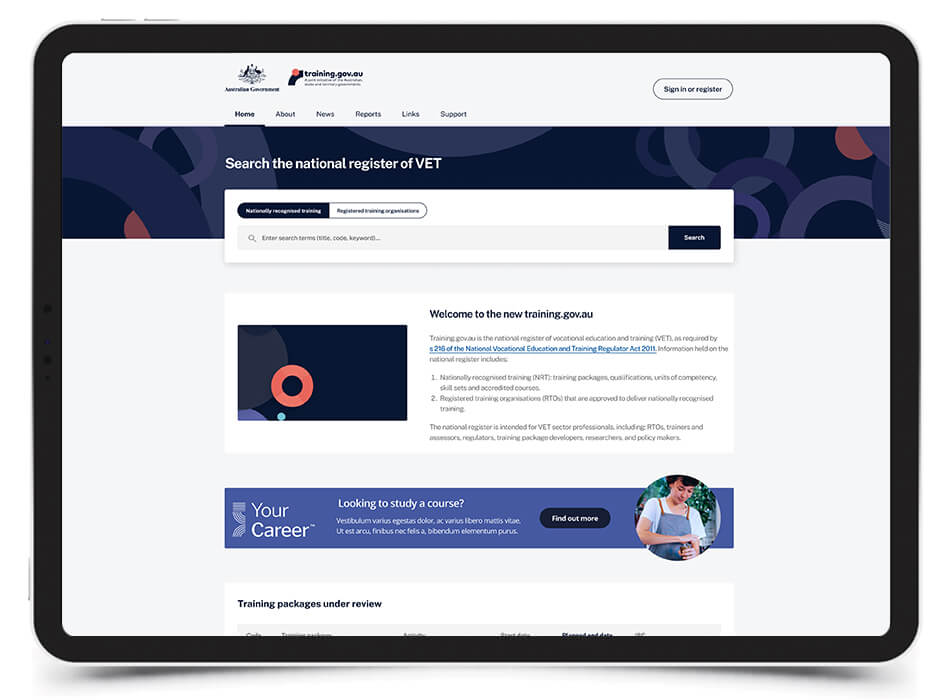
New NTR Website
Replacement for training.gov.au with modern UX/UI, responsive (mobile friendly) and WCAG accessible.
Enhanced TPCMS
Improved trainging package management & workflow for training packages through Training Package Central administration dashboard.
Consultation Portal
Created new portal + integrated workflow (requirements gated by policy).
Downstream Data Support
Improved technical support and data consistency for web services.
Inputs included 200+ stakeholder conversations, 400+ survey responses, DEWR stakeholder mapping, and the draft TPOF.
Website users (TGA)
TPCMS & VETNet
Web Services & Consultation
Users & stakeholders
Early UI focuses on modernising TGA: streamlined look & feel, improved navigation and search, clearer content layout, and on-screen explanations (alerts/flags). As the project progressed, the following phases were to enhance the TPC (Training Package Central) administration dashboard to manage the authoring of training packages.
Foundations
Artefacts
Constraints

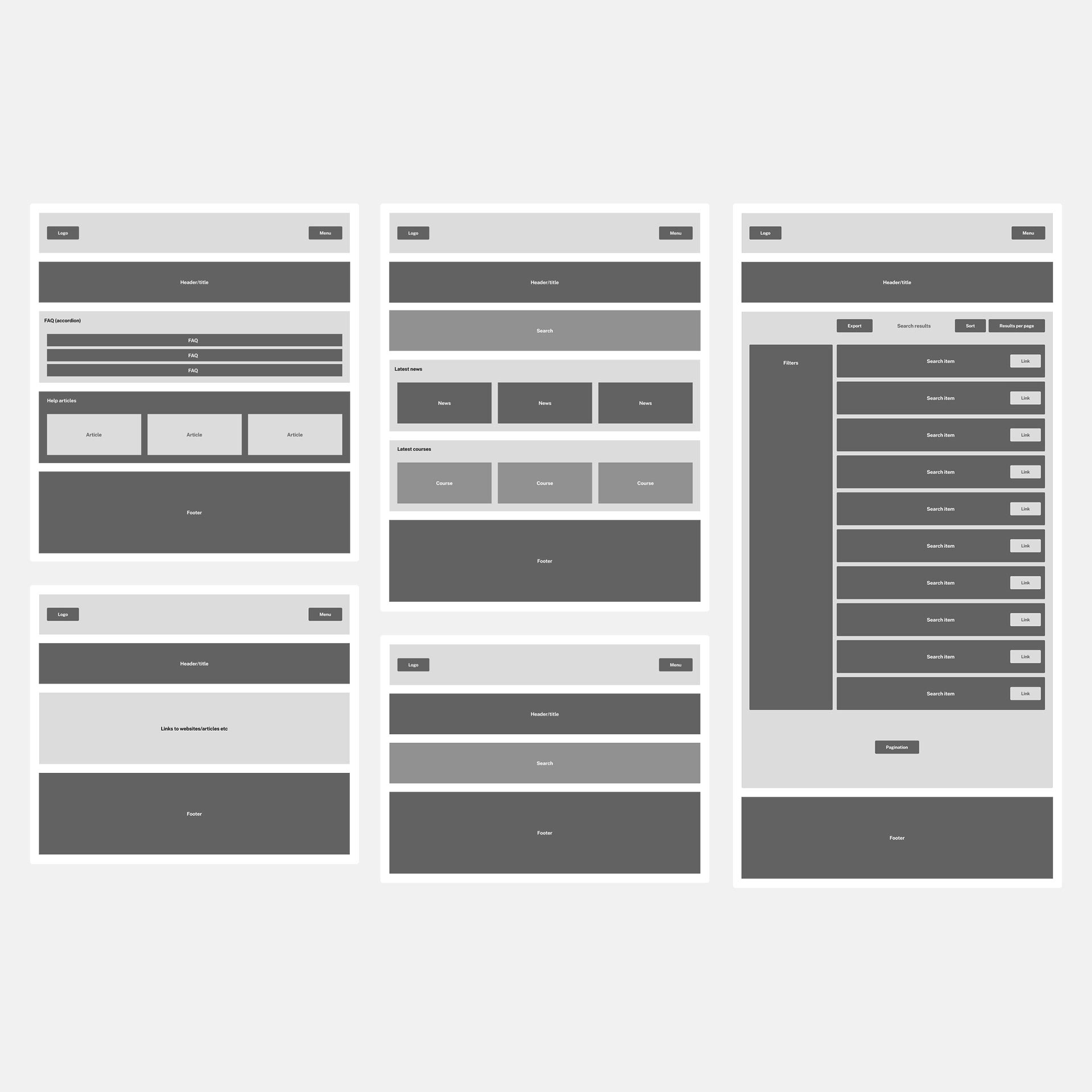
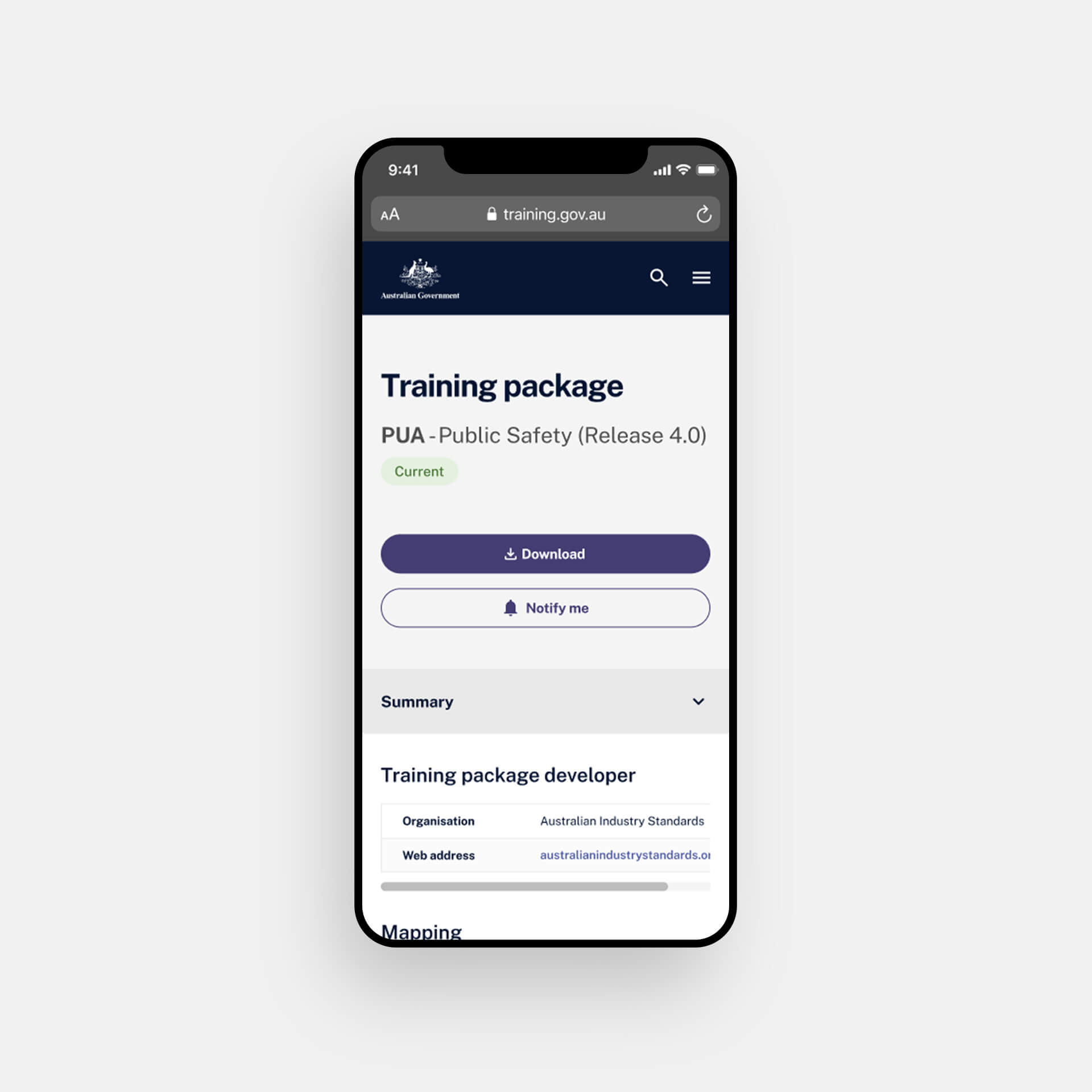
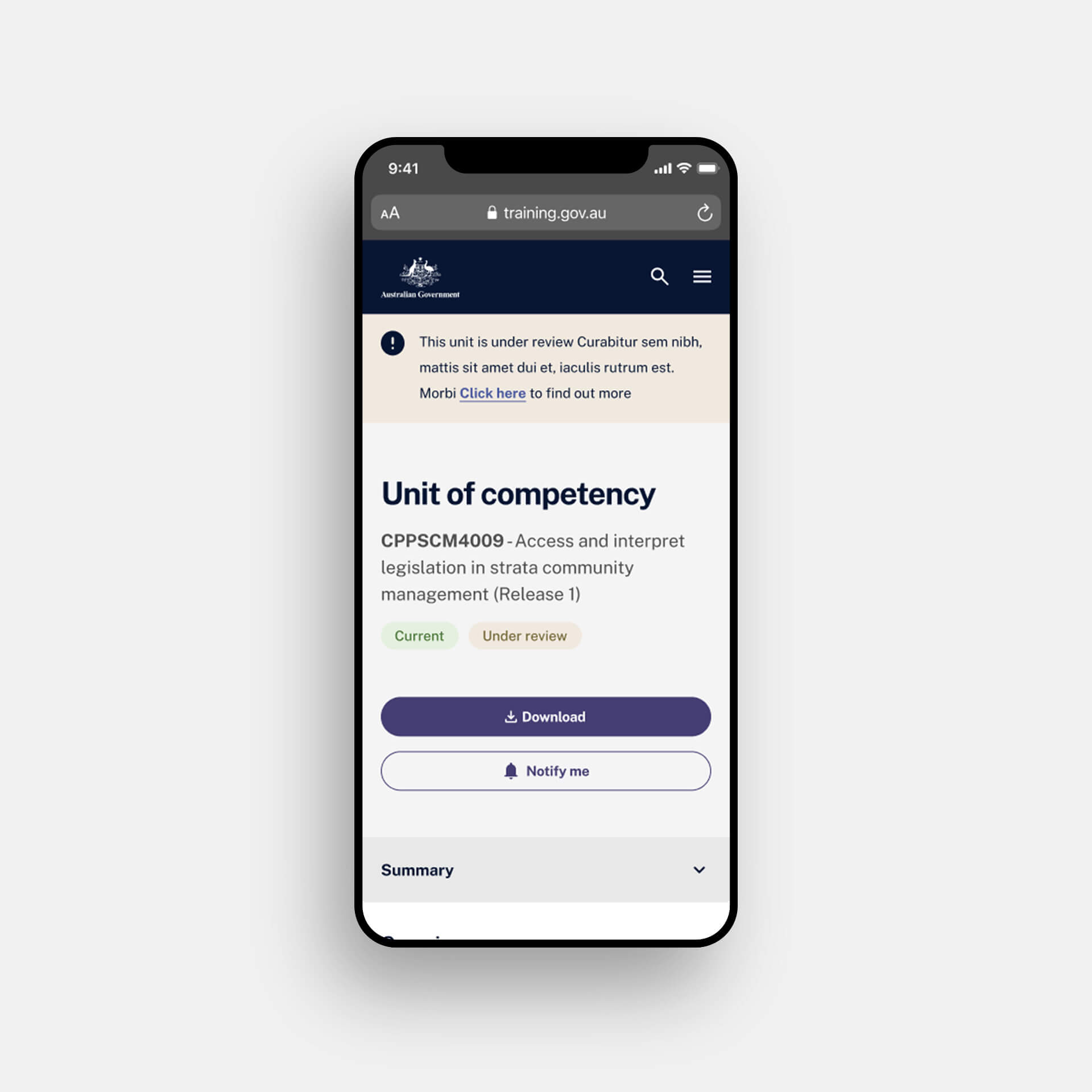
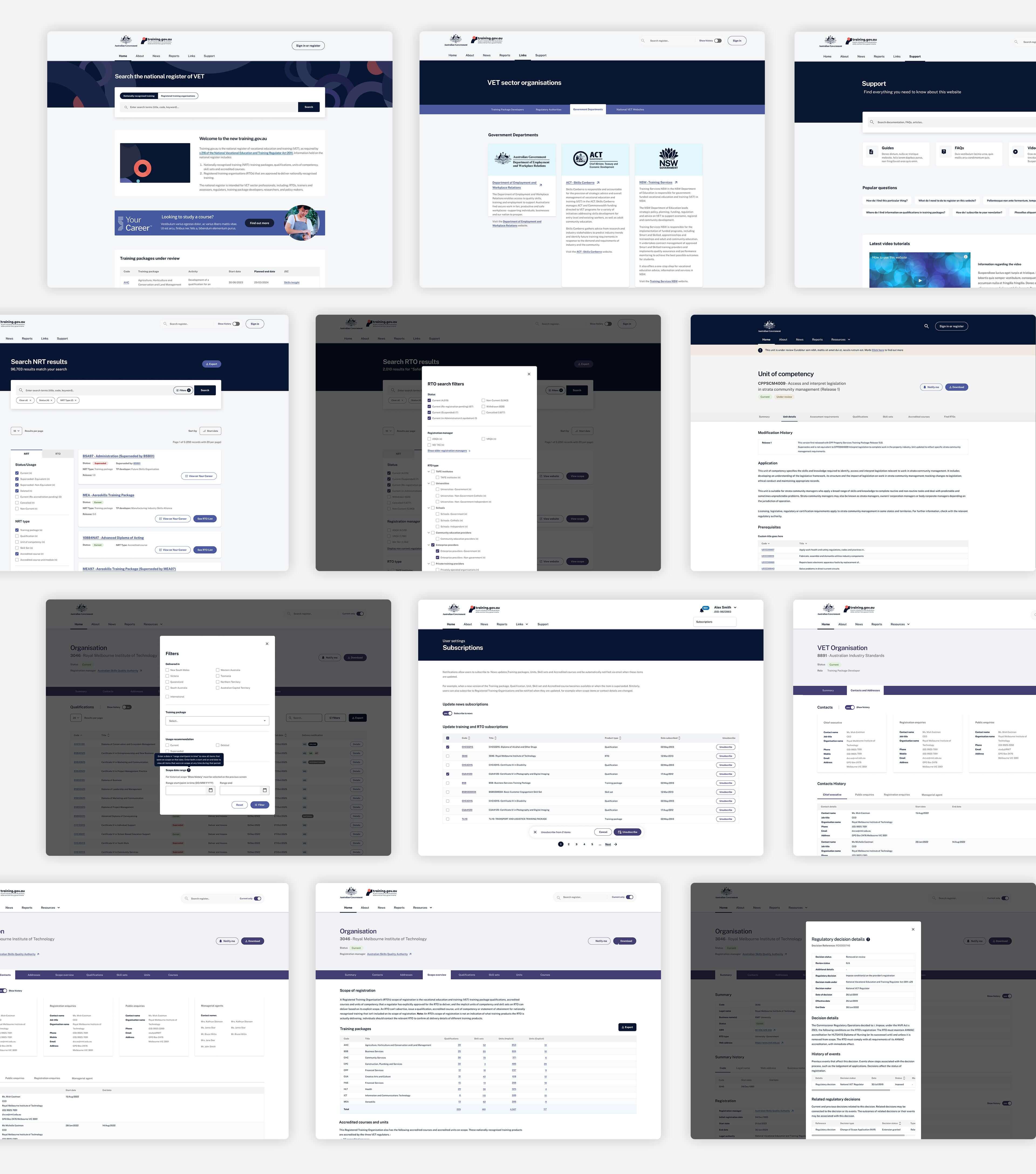
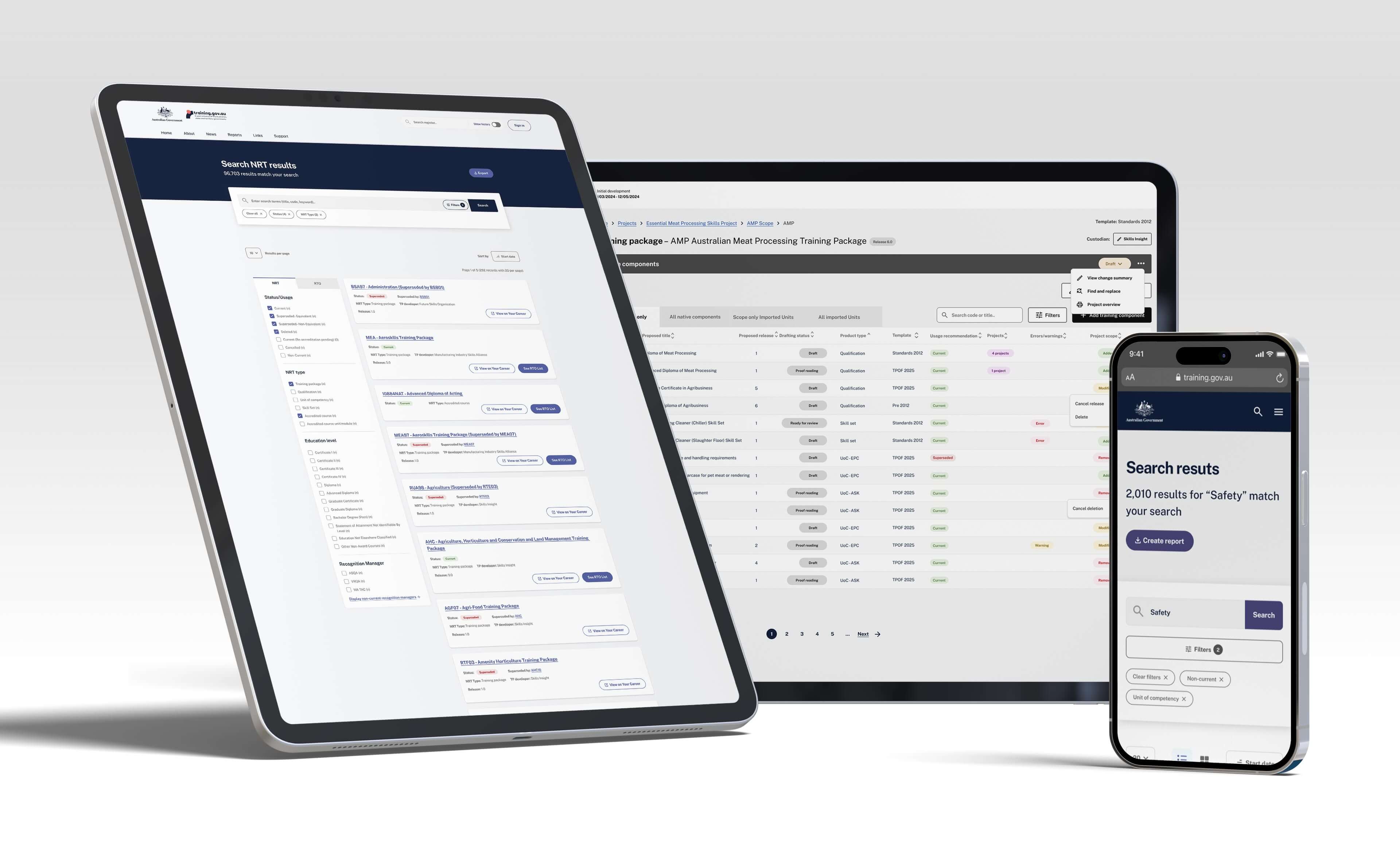
Policy & governance
Discovery recommendations highlighted
The design phase delivered foundations that modernise training.gov.au and set up the broader NTR ecosystem (TPC) for scale, accessibility and transparency, while reducing cognitive load for key user groups.
Website (training.gov.au)
Data & web services
Authoring & governance
User-centred evidence
Design delivered
EA principles & requirements, User Journey + personas, function overview, sitemap, lo-fi wires and 347+ UI artefacts.
What this enabled
Consistent, accessible patterns (WCAG 2.1), scalable IA, and clear auth/roles to support integration and policy-aligned workflows.
Services delivered
Build modernised site, enhance TPCMS flows, define consultation workflows post-TPOF, and modernise web services/APIs.